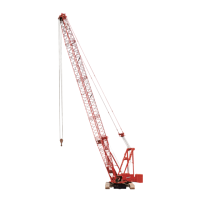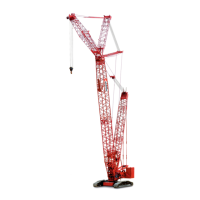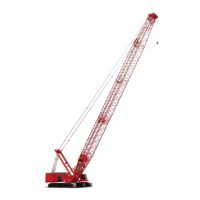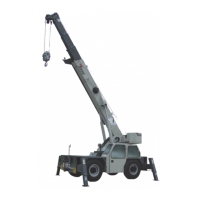Manitowoc Published 05-15-17, Control # 043-09 6-13
999 LUFFING JIB OPERATOR MANUAL MAINTENANCE
Maintenance
Inspect and test the block-up limit controls weekly or every
40 hours of operation, as follows:
IMPORTANT: Do not operate crane until cause for improper
operation and all hazardous conditions have been found and
corrected.
1. Lower the boom onto blocking at ground level and
carefully inspect the following items:
a. Inspect each limit switch lever and actuating lever
for freedom of movement. Apply one-half shot of
grease to the fitting on the actuating lever. Wipe
away any excess grease.
b. Inspect each weight for freedom of movement on
the load line.
c. Inspect each weight, chain, shackle, and connecting
pin for excessive or abnormal wear. Make sure
cotter pins for shackles are installed and spread.
d. Inspect the entire length of electric cables for
damage.
e. Check that the electric cables are clear of all moving
parts on the boom and jib and that the cables are
securely fastened to the boom and jib with clips or
nylon straps.
f. Check that all plugs are securely fastened.
2. Test the block-up limit controls for proper operation
using either of the following methods:
a. BOOM LOWERED: Manually lift each weight —
one at a time — while the engine is running. The
load drum should not operate in the hoist direction
and the boom/luffing hoist should not operate in the
lower direction.
b. BOOM RAISED: Slowly hoist each load block and
weight ball — one at a time — against the weight.
When the chain goes slack, the corresponding load
drum should stop hoisting and the boom/luffing hoist
should not operate in the lower direction.
A837
See Load Block Reeving Drawing
for Suggested Location of Weight
Two Chains Prevent
Weight from Turning
Weight
Chain
Shackle
Connecting
Pin
Weight
Shackle
Chain
FIGURE 6-8
Lower Boom Point (multiple part),
Lower Boom Point (two lines over point),
Universal Anchor Joint,
Luffing Jib Point (multiple part), or
Fixed Jib Point (2-part)
Fixed Jib Point (1-part),
Upper Boom Point,
Luffing Jib Point (single part),
Lower Boom Point (single part), or
Luffing Jib Intermediate Fall
3 ft (0,9 m) to Top
of Weight Ball
Weight
Weight
Weight
Lift
Plates
Lift
Block
Lift
Block
Single Part Reeving
Multiple Part Reeving
Dead Ended at Block
Multiple Part Reeving
Dead Ended at Boom
Dead-End Load Line
or Slowest Live Line
Connecting
Pin
CAUTION
Two-Block Hazard!
Use extreme care when testing block-up limit controls
when boom is raised. If block-up limit control fails to stop
load, immediately stop load by moving drum control
handle to off or by applying drum working brake.
Otherwise, two-blocking may occur.
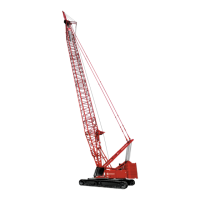
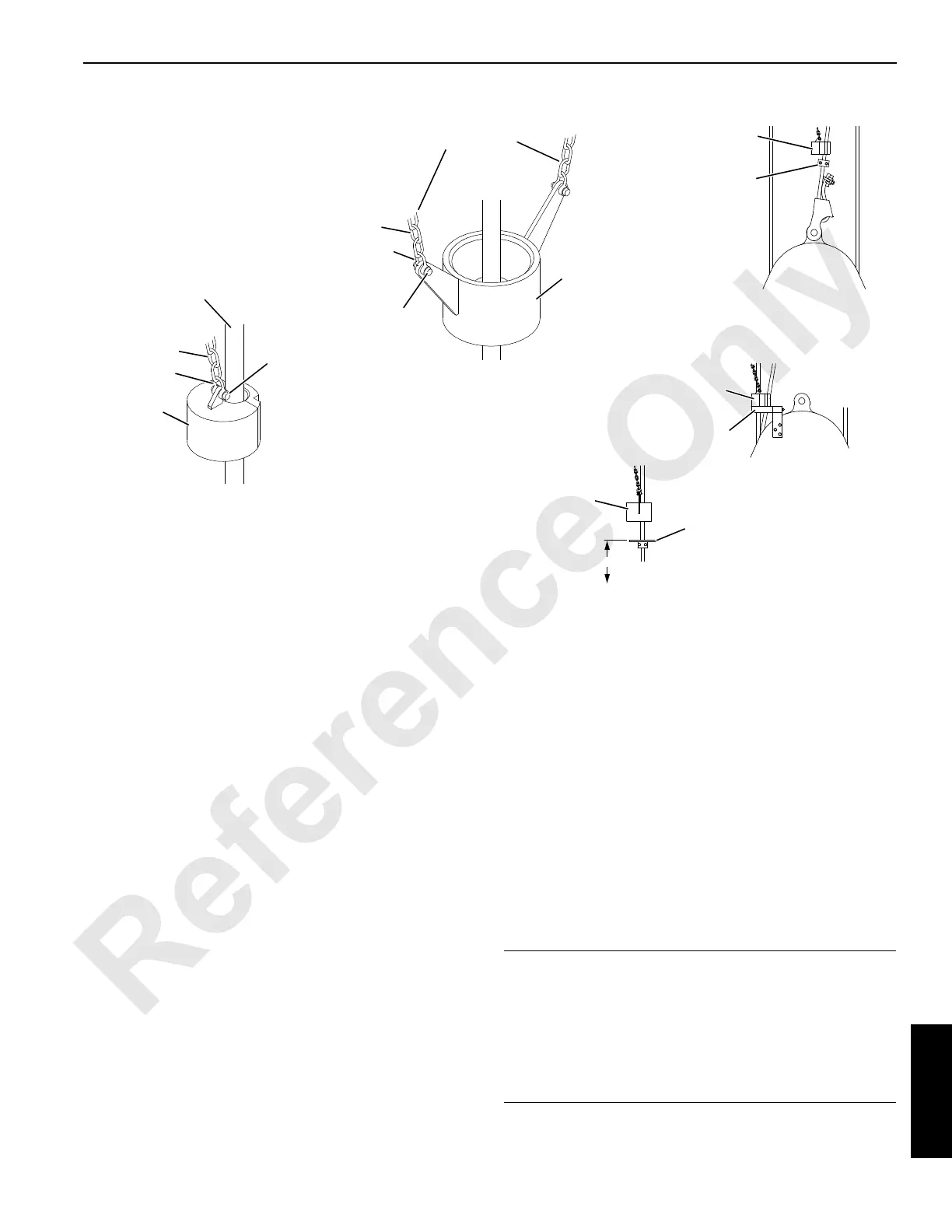